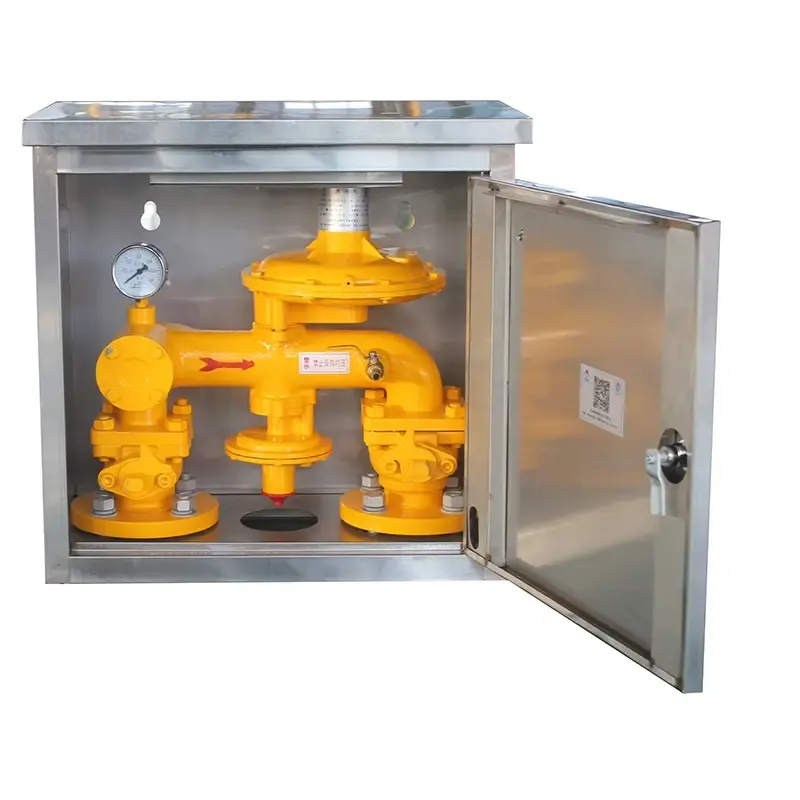
Dec . 05, 2024 11:11
Back to list
Gas Pressure Reduction Station Overview and Operating Principles
Understanding Gas Pressure Reduction Stations
Gas pressure reduction stations play a crucial role in the natural gas supply chain, ensuring that gas is delivered safely and efficiently to consumers. These facilities are strategically located throughout gas distribution networks, serving as intermediaries between high-pressure transmission lines and low-pressure distribution systems.
The Function of Gas Pressure Reduction Stations
At the core of their operation, gas pressure reduction stations are designed to reduce the pressure of natural gas from the transmission pipelines to levels that are suitable for local distribution networks. Transmission lines operate at high pressures, often exceeding several hundred psi (pounds per square inch), to facilitate the long-distance transport of gas. However, once the gas reaches urban and residential areas, it needs to be at lower pressures that are safe and manageable for consumer use.
The process begins when high-pressure gas enters the reduction station. Large valves and pressure regulators work to decrease the gas's pressure, ensuring a smooth transition to the lower-pressure distribution network. These stations often include metering equipment to measure the flow of gas, allowing operators to monitor and maintain the system effectively.
Key Components of Pressure Reduction Stations
1. Pressure Regulators These are the heart of the reduction station. They automatically adjust the flow of gas, ensuring that the pressure remains within the specified limits for downstream distribution.
.
3. Heaters In colder climates, gas can condense or freeze, leading to potential blockages. Heaters are employed to warm the gas before it enters the distribution system, keeping it in a gaseous state.
محطة تخفيض ضغط الغاز

4. Safety Systems Given the potentially hazardous nature of natural gas, pressure reduction stations are equipped with safety devices, such as pressure relief valves and emergency shut-off systems, to mitigate risks in case of equipment failure or overpressure situations.
Importance of Gas Pressure Reduction Stations
1. Safety Assurance By regulating the pressure of natural gas, these stations safeguard against potential accidents and leaks that might occur if gas were to flow at uncontrolled pressures.
2. Efficiency Properly functioning pressure reduction stations enhance the efficiency of gas delivery, ensuring that consumers receive their gas needs without delay or interruption.
3. Environmental Impact Effective management of gas pressure minimizes the risk of leaks, which can contribute to greenhouse gas emissions. Thus, these stations play a role in environmental protection by promoting more efficient gas use.
4. System Reliability The presence of pressure reduction stations contributes to the overall reliability of the natural gas infrastructure. They help ensure that the supply of natural gas remains consistent, particularly during peak demand periods.
Conclusion
Gas pressure reduction stations are a vital component of the natural gas distribution framework, balancing the necessity for high-pressure transport and safe delivery to consumers. Their strategic operation not only enhances the efficiency and reliability of the gas supply but also ensures public safety and mitigates environmental risks. As the demand for natural gas continues to grow, the importance of these stations in our energy infrastructure will only increase, underscoring their critical role in modern society.
Latest news
-
Safety Valve Spring-Loaded Design Overpressure ProtectionNewsJul.25,2025
-
Precision Voltage Regulator AC5 Accuracy Grade PerformanceNewsJul.25,2025
-
Natural Gas Pressure Regulating Skid Industrial Pipeline ApplicationsNewsJul.25,2025
-
Natural Gas Filter Stainless Steel Mesh Element DesignNewsJul.25,2025
-
Gas Pressure Regulator Valve Direct-Acting Spring-Loaded DesignNewsJul.25,2025
-
Decompression Equipment Multi-Stage Heat Exchange System DesignNewsJul.25,2025

